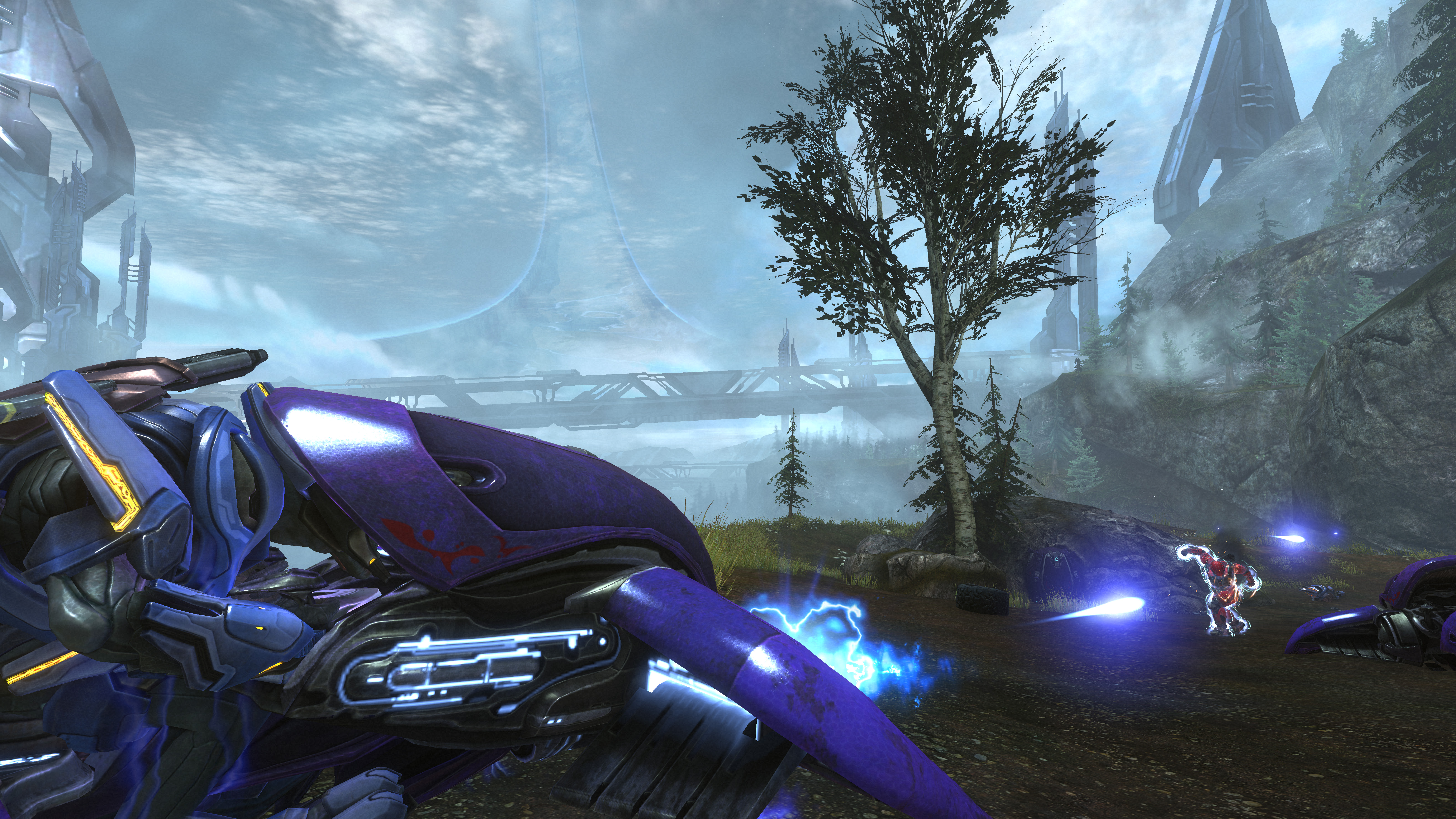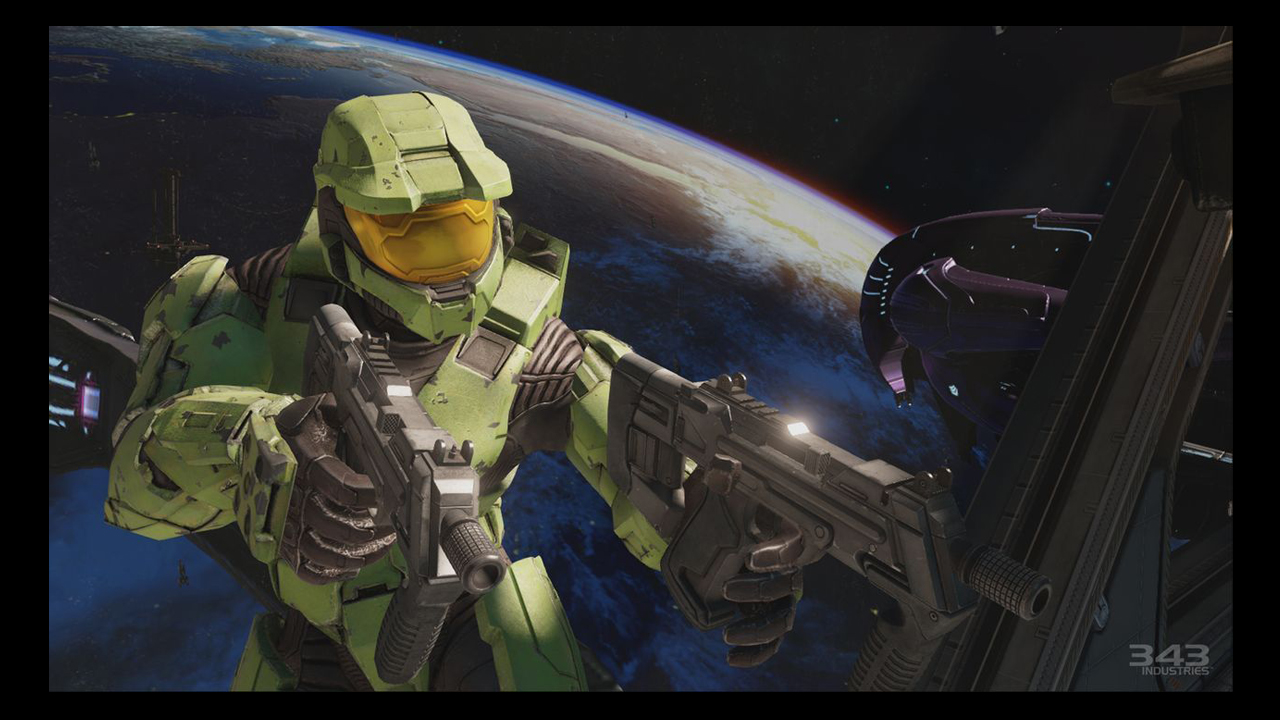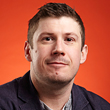GamesRadar+ Verdict
Pros
- +
Four of the best and most important console FPS for the price of one
- +
Free-form presentation lets you enjoy what you want
- +
how you want
- +
The new Halo 2 cutscenes are stunning
Cons
- -
The older games are starting to show their flaws
- -
The lack of Halo: Reach makes for a slightly incomplete story
- -
The new Halo 2 cutscenes are really distracting
Why you can trust GamesRadar+
Freedom. Open-ended, strange new worlds, waiting to be explored at your own pace. Spiraling possibilities afforded by airy, freeform, dynamic combat. That’s what Halo is all about. And that’s what, a few presentational missteps and strange decisions aside, The Master Chief Collection is all about too.
Effectively a Halo jukebox, the MCC’s aim is to give you the Halo you want, customised to your own tastes, however and whenever you want it. Whatever your interpretation of, and preferences within, the series, this is your tool for realising them on a whim. A build-your-own-Halo kit of immense value to learned series enthusiast and eager-to-learn newbie alike.
All four numbered campaigns can be played straight-through or as individually selected missions. Themed playlists allow you to rattle through a concentrated burst of any Halo flavour you might fancy. Daring escapes? Have a whole block of them. Fancy a bit of tight corridor fighting? Pick your game, then have at it, entirely uninterrupted. Those difficulty-shifting, physics-bending, firework-launching skull modifiers you remember so dearly? They have their own menu too. Of course, well-paced, story-driven campaigns such as these are best experienced in their entirety, the first time through, but Halo also works so well 'in the moment' that this buffet approach to its varied gameplay is a very smart and welcome touch,

All of this is available from your first load up. Nothing requires unlocking. It’s a big bucket of fun, filled to the brim with every one of the series’ individual raw ingredients, ready to be reached into and consumed in any combination you wish. It’s all freedom. It’s all waiting to be explored at your own pace. As for the games themselves?
It’s a strange feeling at first, going back to the original Halo: Combat Evolved with objective, time-narrowed eyes, particularly through the stark retrospective lens forced by the proximity of its successors. To be blunt, in a variety of ways, the game is starting to feel old. That early, once-dramatic escape from the Pillar of Autumn now feels tame, sparse, even apologetic by modern standards. A couple of interior-focused later levels are inexcusably built of over-used, repeated architecture, copy-and-pasted again and again to create an uncomfortable sense of FPS Groundhog Day. But you know what? Ultimately, within the great scheme of Combat Evolved’s overall journey, none of that really matters.


Few action games can match Halo for vehicles. Because Halo doesn't treat its automotive additions as obligatory distractions, but rather as full-blown tools of its core arsenal, on a par with its guns and grenades. Their purpose is dictated only your own creativity, and the locations you can use them restricted only by how good you are at bending the rules of the road. And all of them handle beautifully, heft, control, physics and weaponry humming along together in perfect unison. Well, apart from the bouncy clown-car that is the Combat Evolved Warthog. But it gets better, I promise.
Because Halo’s combat. Good Lord, Halo’s combat. Despite the sometimes dated design on show elsewhere - emphasised by it, in fact - it’s staggering how far ahead of the competition Halo’s core gunplay still is. In 2014, only Bungie's own follow-up, Destiny, manages to emulate the same feeling. No mere case of ‘point-and-click to victory’, Halo’s skirmishes furnish an unparalleled sense of presence, of agency, of this being your fight, shaped and won by your own actions. With only a handful of main enemy types (three, at its core), Halo creates a complex, ever-shifting set of priorities and emergent, flowing strategies within an organic ecosystem of enemy hierarchy, weapon use, and environmental possibilities.
There’s physicality, even a musicality, to the rhythmic momentum at Halo’s core. The medium-to-close range focus of the weapons forces intimate interaction. The perfectly pitched cycling of the Chief’s regenerating shields creates a cadence of attack, evasion and retreat as much akin to a spontaneously choreographed dance as a gun fight. When these endlessly satisfying qualities are amplified by Halo’s sprawling yet intricate wider environments, the result is still unlike anything else out there. In fact at times, such as in the almost open-world rural areas, or the bogglingly non-linear brilliance of the Silent Cartographer level, it feels as though free-roaming shooter series like Far Cry are still racing to catch up to what Halo did 13 years ago.
So it’s even more bamboozling that Halo 2 initially eschews so many of Combat Evolved’s structural joys in favour of a largely enclosed first half of labyrinthine urban environments and cramped alien interiors. Coming straight from the first game, Master Chief’s new handling, with its double-sized jumps and slightly airier aiming, immediately feels jarring, but that’s exacerbated by how little space the game gives it to breathe. It’s only at the mid-point, when things open up on a new Halo ring-world, that it all makes sense, the additional manoeuvrability finally justified and allowed to (almost literally) fly. It’s a deeply liberating moment, the location shift all the more exhilarating for it, but it does leave a frustrated wondering of what the previous few hours could have been.
Speaking of jarring contrasts, there’s another interesting point to note with Halo 2. In addition to the greatly improved graphics shared with the first game’s remake, the sequel has brand new cutscenes, containing the same narrative content as the originals (alongside some new scenes linking the game to the upcoming Halo 5), but rendered to a retina-melting Xbox One standard. Borderline implausible in their photorealism, they’re almost worth playing Halo 2 for alone, but they do come with a price. So far in advance are they of the visuals of any game in this collection (even the gorgeous Halo 4), that the juxtaposition can be very uncomfortable. In isolation, they’re a stunning addition. Within the great scheme of the collection as a whole, they’re rather detrimental to coherence.
Thankfully, coherence is what Halo 3 is all about. Although visually unimproved from its seven year-old original version - again, jarring after its predecessor’s contemporary upgrades - bar the across-the-board boost to 60 frames-per-second, 1080p, this is easily the most confident, complete game in the collection. Opening hard, with a rip-roaring jungle rampage that re-establishes real Halo within minutes, it steadily opens up and expands its scale with a classy, assured swagger.

Combat is more thoughtfully laid-out and buttery-smooth than ever before. Pacing, escalation and set-pieces are nigh-flawless, even the most extravagant moments running on that same engine of player-driven agency fundamental to Halo’s identity. It perhaps lacks slightly in ambiance, missing the earlier (and later) games’ exotic sense of wonder, or Halo 4’s intoxicating visual fidelity, but it remains probably the closest we have so far to a Halo sweet-spot.
And as for Halo 4, now that we’re clear of the unrest caused by original developer Bungie’s departure from the series, there’s clearly a hell of a lot to recommend it. Starting a new story with a new setting, it recaptures the first game’s stranger-in-a-strange-land vibe better than any other Halo since, also establishing a surprisingly affecting darker tone by way of heavier, more personal narrative elements. Design-wise, it feels like a perhaps understandable ‘safe first attempt’ by 343 Industries, presenting the hits without veering far from the tried and tested course.
Its only real failing comes as the series’ traditional Covenant enemy roster is replaced by the less satisfying Prometheans, the extra combat dimensions furnished by their predecessors’ finely honed balance not quite there. But still, it’s a strong start for the new trilogy, and, running with the Xbox One’s extra performance, overwhelming in its beauty, last-gen origin be damned.

And then there’s multiplayer. And yes, that is an incredibly weighted statement to make in such a short sentence. Presented in the same game-by-game, pick ‘n’ mix format as the campaigns, the MCC’s multiplayer component is nothing less than a complete history of some of the finest competitive shooting ever seen on a console.
The versatility of Halo's combat model is a wonder in a multiplayer environment, scaling effortlessly from the broad-strokes anarchy of wide, vehicular combat, to intricate, granular, tactical play. Accessible enough for anyone to pick up and play, but holding immense depth and strategy for those wishing to look deeper, its creative but balanced weapon-set and penchant for real, drawn-out, cat-and-mouse duels make any version of it a timeless experience. Whether playing the stripped down deathmatches of Combat Evolved or the bells-and-whistles, sprint-enabled, ordinance-dropping, ability-unlocking extravaganza of Halo 4, that delicious, gooey core of pure gameplay remains at the forefront.
And of course, this is the most complete version there’s ever been. With every multiplayer map available immediately (including the previously PC-only stages from CE), it’s a catalogue of some of the best-designed environments ever to witness a teabagging. There’s a reason that people were still playing Halo 2 online right up to the closure of the original Xbox Live. There’s a reason Halo 3 and 4 are still active online today. And now you have all of those reasons in one place, via one menu, at the touch of a button. That’s an important thing to have in your life.

Having all four numbered Halos together in close proximity raises an interesting and unexpected conclusion. You see, whatever your perception of Halo, whatever instinctive thoughts and feelings make up the essence of the series for you, in truth it doesn’t exist in any single, concrete form. It’s the product of memory, nostalgia, and combined, long-term perceptions, a gestalt idea realised over the course of 13 years and multiple iterations. And that, ultimately, is where The Master Chief Collection shines.
Despite prioritising out-of-place technical revisions over the series’ chronological integrity - and thus throwing coherence out of whack with Halo 2’s presentation - the freeform, mix-and match approach taken to the collection’s structure is perhaps the closest we’ll ever get to a real-world realisation of the imagined Halo ideal. Able to finally play all of Halo, take it apart, rebuild it, and remix it to our own tastes, we can now play both Halo as it was made, and Halo as it exists in our minds. That’s a hell of a good thing. And whether you’re a series veteran or an interested new recruit, it’s something you should definitely consider exploring. In fact you should just do it. Right now.

As much cultural record as game compendium, The Master Chief Collection's smart, insightful, celebratory presentation elevates its already excellent contents to even greater heights.
UPDATE: The multiplayer component of this game was tested at a closed review event, due to the lack of availability of the full online experience before review. Having tested it out again in full, live conditions upon release, I have alas discovered major problems with the game's online connectivity. In terms of matchmaking at least, The Master Chief Collection is barely functional. In the three days since launch, I've managed to get into three, half-full matches in total. The vast majority of matchmaking attempts have resulted in endless searching and several game freezes, demanding a reset to the dashboard to fix.
Microsoft and 343 Industries are aware of the problem, and are working on a solution. However the game's first server-side update, intended to remedy the problem, has not worked satisfactorily. As of the evening of November 13, the strategy has changed to the removal of a significant number of the game's online playlists, in an attempt to funnel players toward each other in more concentrated numbers. In our continued experience - using two different Xbox Ones in separate locations - this has not helped either.
It's a pretty dire situation, effectively translating into the online component of the game - a huge deal in Halo, even moreso given the online debut of the first two games' legendary multiplayer - being disabled. We'll keep you updated on this one as it progresses, but for now you should consider Halo: The Master Chief Collection a campaign-only purchase.
More info
| Genre | Shooter |
| Description | Revisit Master Chief's journey so far in the Halo universe, starting from the beginning. |
| Platform | "Xbox One" |
| US censor rating | "Mature" |
| UK censor rating | "" |
| Release date | 1 January 1970 (US), 1 January 1970 (UK) |












